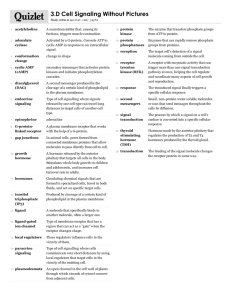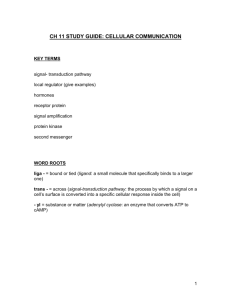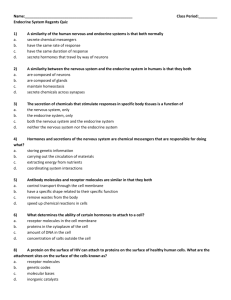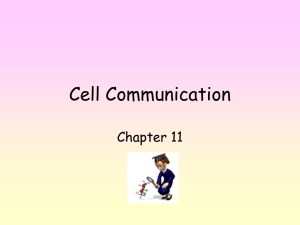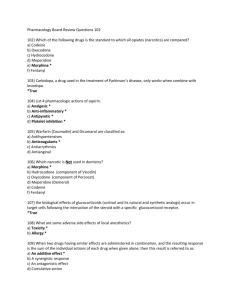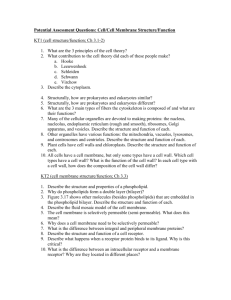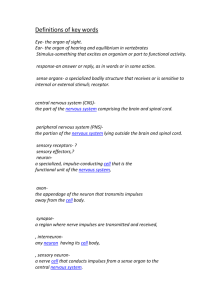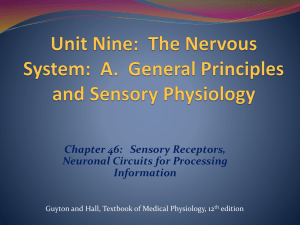Nervous 2 - WordPress.com
advertisement
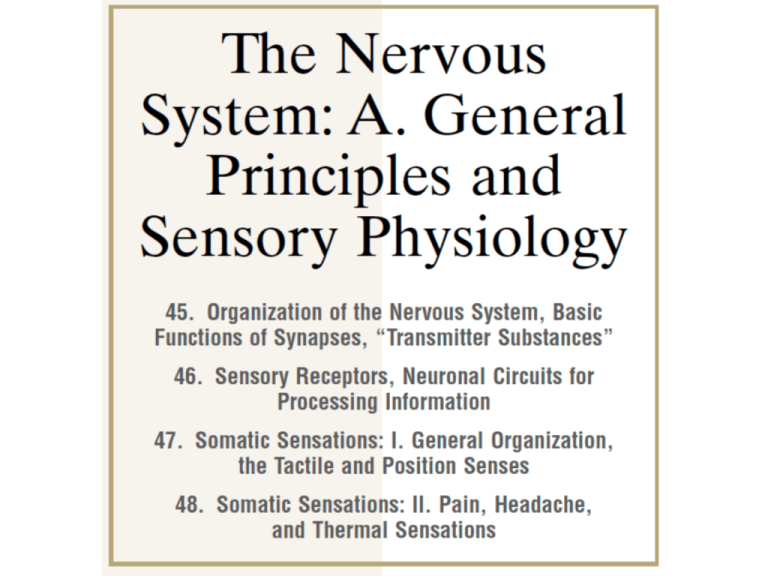
Sensory receptors Effectors: Motor functions • Control the various bodily activities by controlling – contraction of appropriate skeletal muscles throughout the body – contraction of smooth muscle in the internal organs – secretion of active chemical substances by both exocrine and endocrine glands in many parts of the body. Processing of information • Integration • Processing • Storage Memory is essentially a function of synapses Major levels of CNS Function • Spinal cord level • Lower brain/subcortical level • Higher brain/cortical level Synapses • Chemical • Electrical Second messenger system in synapses Opening specific ion channels through the postsynaptic cell membrane. Activation of cyclic adenosine monophosphate (cAMP) or cyclic guanosine monophosphate (cGMP) in the neuronal cell Activation of one or more intracellular enzymes. Activation of gene transcription. Chemical Substances That Function as Synaptic Transmitters • Class I • Acetylcholine • Class II: The Amines • Norepinephrine • Epinephrine • Dopamine • Serotonin • Histamine • Class III: Amino Acids • Gamma-aminobutyric acid (GABA) • Glycine • Glutamate • Aspartate • Class IV • Nitric oxide (NO) Rapidly acting Slow acting • Hypothalamic-releasing hormones • Thyrotropin-releasing hormone • Luteinizing hormone–releasing hormone • Somatostatin (growth hormone inhibitory factor) • Pituitary peptides • Adrenocorticotropic hormone (ACTH) • b-Endorphin • a-Melanocyte-stimulating hormone • Prolactin • Luteinizing hormone • Thyrotropin • Growth hormone • Vasopressin • Oxytocin • Peptides that act on gut and brain • Leucine enkephalin • Methionine enkephalin • Substance P • Gastrin • Cholecystokinin • Vasoactive intestinal polypeptide (VIP) • Nerve growth factor • Brain-derived neurotropic factor • Neurotensin • Insulin • Glucagon • From other tissues • Angiotensin II • Bradykinin • Carnosine • Sleep peptides • Calcitonin Types of Sensory Receptors and the Sensory Stimuli They Detect Mechanoreceptors Thermoreceptors Nociceptors Electromagnetic receptors • Chemoreceptors • • • • Modality of Sensation—The “Labeled Line” Principle The specificity of nerve fibers for transmitting only one modality of sensation is called the labeled line principle. Each nerve tract terminates at a specific point in the central nervous system, and the type of sensation felt when a nerve fiber is stimulated is determined by the point in the nervous system to which the fiber leads. For instance, if a pain fiber is stimulated, the person perceives pain regardless of what type of stimulus excites the fiber. The stimulus can be electricity, overheating of the fiber, crushing of the fiber, or stimulation of the pain nerve ending by damage to the tissue cells. Receptor Potential Whatever the type of stimulus that excites the receptor, its immediate effect is to change the membrane electrical potential of the receptor. This change in potential is called a receptor potential. (1) by mechanical deformation of the receptor, which stretches the receptor membrane and opens ion channels (2) by application of a chemical to the membrane, which also opens ion channels (3) By change of the temperature of the membrane, which alters the permeability of the membrane (4) by the effects of electromagnetic radiation, such as light on a retinal visual receptor, which either directly or indirectly changes the receptor membrane characteristics Transmission and Processing of Signals in Neuronal Pools Spatial and Temporal summation Increasing signal strength is transmitted by using progressively greater numbers of fibers. A second means for transmitting signals of increasing strength is by increasing the frequency of nerve impulses in each fiber, which is called temporal summation Relaying of signals through neuronal pool Divergence, Convergence & Inhibition Convergence means signals from multiple inputs uniting to excite a single neuron. amplifying Convergence is one of the important means by which the central nervous system correlates, summates, and sorts different types of information. Instability and Stability of Neuronal Circuits • Inhibitory Circuits as a Mechanism for Stabilizing Nervous System Function – Occur in virtually all sensory nervous pathways and inhibit either the input neurons or the intermediate neurons in the sensory pathway when the termini become overly excited – some neuronal pools that exert gross inhibitory control over widespread areas of the brain—for instance, many of the basal ganglia exert inhibitory influences throughout the muscle control system • Synaptic Fatigue as a Means for stabilizing the Nervous System – synaptic transmission becomes progressively weaker the more prolonged and more intense the period of excitation Summation & Inhibition
